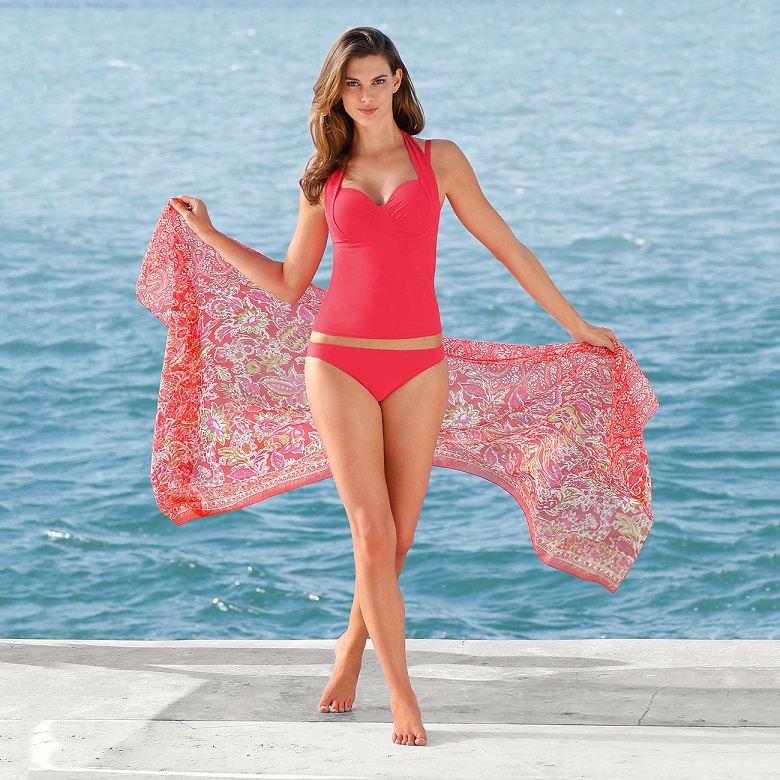The pareo is often synonymous with the beach and vacations, certainly due to its origins. It also takes them from Polynesia: the pareo dressed both men and women, the aim being to cover their nudity. Traditionally, the pareo is made and dyed by hand, where the most common patterns are large hibiscus flowers and ferns. To obtain these models, real hibiscus flowers and ferns were placed on it and then dried in full sun so that they would perfectly mark the fabric.

The pareo, which has become an essential fashion accessory
The pareo was exported to the West, notably thanks to Paul Gauguin’s Vahinés. Nowadays, we can find every fashionista accompanied by her pareo on the beach. It comes in hundreds of different patterns: of course, we find the essential hibiscus flowers, a nod to its origins, but also sea turtles, seahorses, spangles, and all this in a range of colors to choose from. As you can see, you are sure to find a pareo that matches your swimsuit!
Often made of viscose or cotton, the pareo is also a real treat to wear and allows for quick drying on a wet swimsuit.
How to wear a pareo?
The pareo is a rectangle of very flexible fabric that gives you the possibility of tying it however you want.
You can tie it around the waist to make a skirt and let the top of the swimsuit show. This is the most classic shape in terms of tying but also the fastest. For those who would like to hide their little curves, wearing the pareo as a dress is also quite possible. In the same way as around the waist, the pareo can also be tied above the chest to make a strapless dress.
In another style, you can cross the sides of the pareo in front and tie the ends behind the neck as in the photo below.
Asymmetry is also in fashion, so why not tie the pareo on one side of the shoulder?
You can find more tips for originally tying your pareo on the website Le journal des femmes.
How to maintain your pareo?
The pareo and especially the batik pareo, which is handmade in an artisanal way, does not like the sun. Yes, but in summer and on the beach, it is difficult to avoid the sun, you might say! To extend the life expectancy of your pareo beyond one summer and to keep its shimmering colors as on the first day, here are some tips to follow:
- Avoid exposing your pareo to direct sunlight like a beach towel.
- Do not machine wash, prefer to wash it by hand in cold water
- Let your pareo dry flat in the shade.
As you will have understood, the pareo is the essential accessory to have in your beach bag this summer. Not only is this product very pleasant to wear due to the material it is made of, but it will also match perfectly with your swimsuit set and can be worn in a very original and fashionable way.
And finally, because a picture is worth a thousand words, discover in the video below even more ways to tie a pareo!
